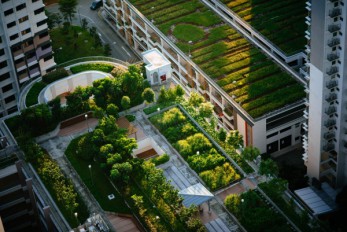
The "smudge" cities are not only an ugly result of air pollution in urban centers, painting in gray buildings and other surfaces.
According to a new Canadian study, natural sunlight triggers the release of smog-forming nitrogen oxide compounds from the grime that typically coats buildings, statues and other outdoor surfaces in urban areas.
The researchers, who reported their findings in the annual conference of the American Chemical Society being held in Boston (16-20 August), carried out the tests in terraces in Germany recording the "behavior" of ... Smudge both in bright light sun and shade.
In a previous study, Dr. Donaldson had already found in the laboratory that the artificial sunlight was able to release nitrogen components from the so called ‘blackness’ of cities, which comprises a mixing of chemicals from the exhausts of vehicles and chimneys.
In his latest study, in collaboration with colleagues from Leipzig, Dr. Donaldson decided to transfer his experiments on building terraces. In a tall tower of the town, researchers placed two large shelves filled with glass beads. One of the two shelves was located at a point where it could accept the sunlight during the day, while the other was in the shade. Soon all the beads began to acquire a gray, dusty appearance.
James Donaldson said “The current understanding of urban air pollution does not include the recycling of nitrogen oxides and potentially other compounds from building surfaces. But based on our field studies in a real-world environment, this is happening. We don’t know yet to what extent this is occurring, but it may be quite a significant, and unaccounted for, contributor to air pollution in cities.”
The researchers said that the grime in shaded areas contained 10 percent more nitrates than grime exposed to natural sunlight, which was consistent with the team’s laboratory findings.
This percentage may seem little, but experts believe that as the sunlight triggers the release of smog-forming nitrogen oxide, a new coating that is rich in harmful substances is created.
Source: acs.org
Source: acs.org
Want to read more like this story?

Google Street View cars used for high-resolution air pollution mapping
Jun, 12, 2017 | NewsThis new approach towards urban air pollution mapping offers much greater spatial precision in compa...

World’s largest air purifier is undergoing testing and will soon start operating in China
Feb, 13, 2018 | NewsPreliminary results suggest it has already helped reduce smog levels in Xian Preliminary results su...

How to reduce temperature in urban environments
Jul, 29, 2019 | NewsA new study conducted by the Portland State examines how vegetation and reflective materials can low...

This artificial tree captures air pollutants 275 times more efficiently than a normal one
Aug, 10, 2017 | NewsIt was developed by a German start-up in order to fight air pollution It was developed by a German...

What the new ‘Air Quality Atlas for Europe’ reveals
Feb, 05, 2018 | NewsThe sources and levels of air pollution in Europe have been mapped The sources and levels of air po...

Assessment of urban cooling using reflective surfaces
Jun, 09, 2021 | NewsA new study focuses on the application of reflective surfaces in order to cool the urban environment...

Sweeping Floods In China Due To Air Pollution!
Jul, 13, 2015 | NewsThe black veil of air pollution in the industrial valley of Sichuan seems that have played a key rol...

Indoor pollution: a widely overlooked problem
May, 10, 2016 | NewsScientists propose the use of real-time sensors of indoor air-quality for the battle against the Sic...

Modeling urban airflows to accommodate future infrastructure
Nov, 22, 2020 | NewsIn a recent study, scientists evaluated the airflows in urban environments to lay the foundations fo...
Trending

Vertical gardens in Mexico City to combat pollution

Saudi Park Closed After 360 Big Pendulum Ride Crashes to Ground, 23 injured

Characteristics of Load Bearing Masonry Construction

Taipei 101’s impressive tuned mass damper

Dutch greenhouses have revolutionized modern farming

Federal court rules Biden’s offshore drilling ban unlawful


